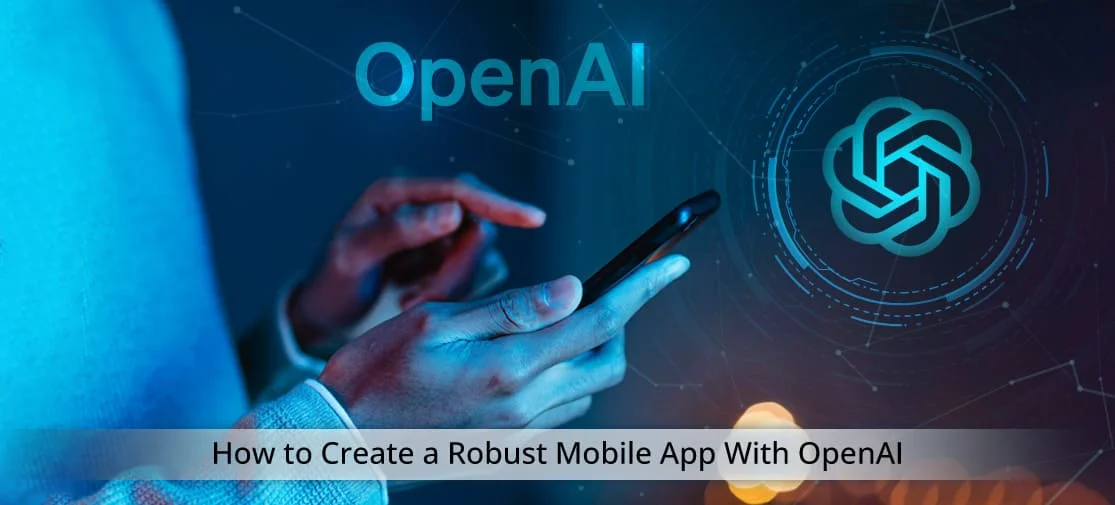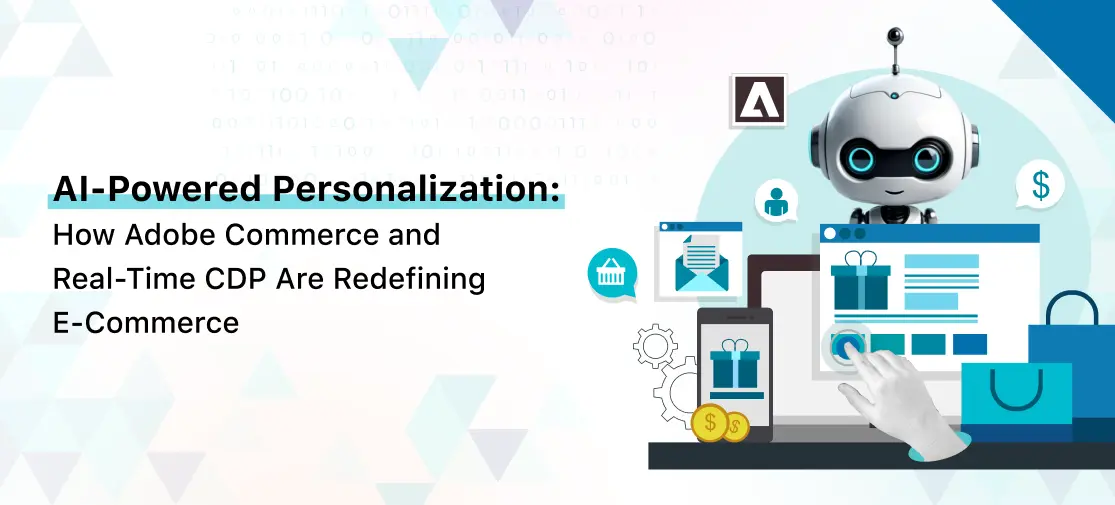Introduction
The first buzzword of 2023 has to be ChatGPT, and given how much attention it has generated globally, it certainly deserves it. The cacophony includes outrageous criticism, amazing claims, countless disputes, indebted remarks, and other things.
In summary, ChatGPT offered the globe a massive scoop of controversy in a variety of flavors. Why should the authors go uncredited if the work is worthy of hype? Now, let's all discuss OpenAI, the company behind ChatGPT and numerous other effective AI technologies of a similar nature.
As of January 2023, OpenAI had received over $1 billion in funding, making it one of the most well-funded machine learning startups in the world.
Imagine using OpenAI-like technologies now. How can it assist you in developing mobile applications? Throughout the app development process, including designing, developing, delivering, and maintaining your development endeavor, you can use automation with the answer-by. The challenge remains, though, where to find the data needed to use OpenAI to build an app.
We've got you covered! You really need to know this informative bit of knowledge!
You will learn about OpenAI and how to use it in the process of developing mobile apps from this post.
History of openai
The goal of OpenAI, an artificial intelligence research center made up of scientists, engineers, and developers, is to produce useful and safe AI that will benefit humanity. A collection of prominent figures in the technology industry, including Elon Musk, Sam Altman, Greg Brockman, Ilya Sutskever, John Schulman, and Wojciech Zaremba, launched the organization in 2015.
The research conducted at OpenAI centers on several AI domains, such as reinforcement learning, computer vision, and natural language processing. The company also creates AI tools and systems, such as the well-known GPT (Generative Pre-trained Transformer) language model, which produces text that resembles that of a human.
OpenAI conducts both basic research and useful applications to enable everyone to benefit from and utilize AI. They have also created moral standards that prioritize accountability, openness, and safety in the creation and application of AI.
An overview of openai
- The AI sector is anticipated to enjoy steady revenue growth to $500 billion by 2023.
- According to OpenAI, ChatGPT will generate $200 million in income by 2023 and $1 billion by 2024.
- AI is expected to grow at a CAGR of 38.1% between 2022 and 2030, reaching a projected $1,591.03 billion in revenue.
- With an expected yearly revenue of $67.3 million, the company is valued at $29 billion as of January 2023.
Top benefits of developing a mobile app with openai api
Creating apps using OpenAI will enable you to get numerous advantages that will eventually allow your app to differentiate itself from competitors in the perspective of your end users:
1. Openai is a treasure for increasing app revenue.
Predictive analysis is one of the many cutting-edge AI features and tools available in OpenAI. Through the use of machine learning techniques, predictive analytics enables firms to examine data and make more informed decisions.
The purpose of predictive analytics is to optimize and enhance the functionality of AI-based systems, such as chatbots.
Artificial intelligence models and algorithms, such as decision trees, neural networks, and linear regression, allow you to perform predictive analytics and determine projected sales figures, comprehend possible client attrition, and spot frauds.
Understanding your target market's perspective about your products can help you tailor your services and adjust your plans, which is the ultimate goal of OpenAI in-app monetization.
2. Automating repetitive processes and streamlining your operations are made possible with openai.
As previously stated, OpenAI is the innovation's treasure. Businesses benefit greatly from its pre-trained models and machine learning algorithms, which automate a lot of repetitive and laborious operations.
OpenAI can be used, for instance, to carry out tasks like text summarizing, sentiment analysis, and image recognition.
GPT-3 is an OpenAI feature that can be used to enable natural language processing. This model can assist you with particular language patterns so that it can automatically reply to emails or answer client inquiries.
Furthermore, OpenAI gives companies the ability to automatically generate database schema, custom routes, and API documentation. Robotic process automation, or RPA, is another OpenAI paradigm that assists companies in automating daily operations.
3. Better security in apps
When discussing strong security, how can we ignore OpenAI's machine learning model? The finest technology for identifying and defending apps against malware attacks, security risks, illegal access, and other dangerous hacker incursions is machine learning in OpenAI.
Thus, if any possible malware activity occurs, this OpenAI model quickly detects the threat and vulnerability and notifies you to take the necessary precautions before hackers take use of them.
Aside from that, OpenAI has made sure no detail is overlooked by offering features like safe data encryption and biometric authentication to give applications protection. To strengthen the security of the application, OpenAI creates secure code snippets and customizations.
4. Advanced analytics
OpenAI is the key to unlocking the true value of data in business. Numerous insights about your clients are contained in the data you have gathered thus far, and these insights need to be examined. OpenAI analyzes and selects data for you so that you may get insightful knowledge about your customers. You can then utilize OpenAI tools, such as predictive analytics, to foresee the future and create an appropriate plan of action.
Since you have researched your customers and adjusted the features and functionalities of your application accordingly, data-driven decisions frequently yield favorable outcomes.
5. Competitive advantage
Developing mobile applications is no longer a laborious task because you have OpenAI's support. With the help of clever OpenAI tools, you may make an app that becomes viral and sets you apart from the competition. With the aid of OpenAI, you may develop it and provide a personalized mobile app experience.
Top 5 openai apis to develop a mobile application
Let’s learn about 3 OpenAI APIs that will majorly help you create an efficient mobile application:
1. Dall-e api
- Mobile app developers can generate graphics from a rough text description by using DALL-E. For a personalized user experience, developers can easily incorporate the API into software and mobile applications. The train algorithm model is used by over 30,00,000 active developers on DALL-E.
Key capabilities of the DALL-E API:
- It allows users to create unique photos of the highest quality with textual descriptions.
- Images can be produced using the DALL-E API in a variety of colors, styles, and resolutions.
- This API doesn't require any prior coding knowledge or picture production, and it is very easy to use.
- Users can view the results instantly and images are generated more quickly.
- The API is affordable and available to small businesses, corporations, and people.
- The pictures are created from a large selection so that consumers can select the best picture.
2. Gpt- 4 api
You will receive anything you ask for. Compared to all previous editions, GPT-4 is far more inventive and team-oriented. It can work with users to develop, revise, and refine technical and creative writing assignments, such as authoring screenplays, music, or writing style guides. It also covers everything, including responding to sporadic inquiries, correcting grammar, summarizing, commanding text, and any other pertinent topic.
GPT-4 can handle more than 25,000 words of text, which makes it suitable for use cases including the development of lengthy content, in-depth discussions, and document search and analysis.
Key capabilities of the GPT-4 API:
- Making little games with 3D designs
- It is able to identify security flaws.
- Provides useful augmentations
- It can perform online sketches.
3. Codex api
Using Codex, an additional OpenAI API, mobile app developers can write code in natural language and have it converted into functional code in several languages, such as Python, JavaScript, and Java.
Compared to writing code from scratch, this functionality saves developers significant time and effort. Furthermore, the technicalities are easily understood even by someone with no background or familiarity with programming languages.
Key capabilities of the Codex API:
- Codex API creates codes with instructions in plain language.
- It converts spoken words to SQL queries.
- A section of Python code is explained in a human-readable language by the Codex API.
- A top-notch Python bug-fixing message-style bot for JavaScript inquiries is called Codex.
- It translates Python phrases from JavaScript
- Reduce the JavaScript function to a single line of code.
Moreover, Codex, the replacement for GPT-3, is taught using code from 54 million GitHub repositories. Python yields the greatest results, according to OpenAI, but this model may be used to generate workable code in dozens more programming languages.
4. Clip api (contrastive language-image pre-training)
Developers can create apps that identify items in photos, describe sceneries, create captions for images, and even carry out sophisticated operations like responding to inquiries regarding visual material by using the CLIP API. Applications for the API include social media, content management systems, e-commerce, and many more.
CLIP is DALL-E in the opposite direction. You can obtain textual explanations of the objects shown in the pictures by placing them here. GPT -3 versions provide the natural language inputs for the model with 12 billion parameters.
Key capabilities of the CLIP API:
- Excellent results as a Zero-Shot classifier
- Superior resilience to Distribution Shift
- Efficiency of computation
5. Whisper api
A speech-to-text model called Whisper can translate many languages into English and transcribe speech to text. 680,000 hours of supervised multilingual and multifunctional online data were used to train the automatic speech recognition algorithm in Whisper. When such a vast and diverse dataset is employed, the results show greater robustness to accents, background noise, and technical language.
This program makes models and inference code publicly available with the goal of fostering the development of robust speech-processing research and practical applications.
Key capabilities of the Whisper:
- Audio is converted into the language that it is in.
- Translate the audio into English and transcribe it.
Conclusion
Using OpenAI APIs gives developers a competitive edge in the ever-changing app development market and simplifies a number of tasks, from creating images to writing code in natural language. Developers can leverage tools such as DALL-E, GPT-4, Codex, CLIP, and Whisper to produce creative and effective mobile applications that offer a personalised user experience, enhanced security, automation, predictive analytics, and advanced analytics. The advancements made by OpenAI not only transform the app development industry but also open the door for a day in the future when AI will be integral to company strategy and user interactions.




